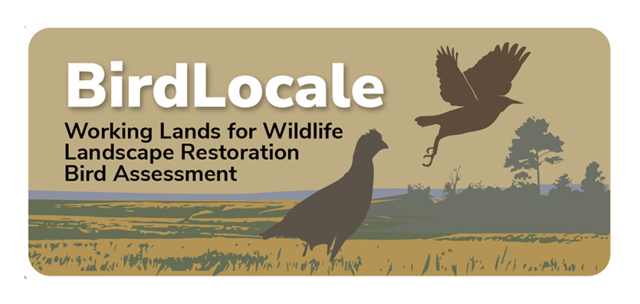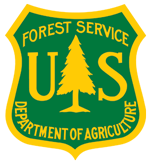Videos
Japanese American Veterans Association Oral History Topic
Amber Cohen - Graduate Student, University of Maryland
Partnering for Climate Change Communication in the National Capital Region
Jenell M. Walsh -Thomas, Melissa A. Clark, and Lindsey Beall, Graduate Students, George Mason University, Center for Climate Change Communication
Japanese-American Veterans Association Oral History Project
National Capital Region, Communications and Anthropology Programs. The Japanese American Veterans Association Oral History Project was initiated by the National Capital Regional Office’s Communication Department. The project’s goal was to record the oral histories of a group of Japanese Americans who were interned during WWII at sites that are now NPS units. These videos allow those who witnessed history tell their story of loyalty in the face of discrimination. This poster will include videos of the interviews.
Partnering for Climate Change Communication in the National Capital Region
The Climate Change Communication Intern Program. In 2012, the Urban Ecology Research Learning Alliance in the National Capital Region and the Center for Climate Change Communication (4C) formed a partnership to communicate about local climate change impacts on natural and cultural resources. The partnership supports NCR parks in telling their climate change stories. The internship involves eight interdisciplinary undergraduate and graduate interns. NPS and 4C mentors work with interns to develop outreach and education products, which leverage traditional and emerging communication modes. Products have addressed communication needs, structured web resources, and connected visitor experiences with park-specific climate change impacts. Interns have developed wayside content, webpages, social media posts, videos, infographics, and interpretive tools. We have evaluated materials informally and formally through presentations to park staff and surveys in NCR. We see this program’s success as a model for other regions, agencies, and NGO’s as a method to start discussions with stakeholders about localized climate impacts.
Appalachian LCC Conservation Design
A phased, multi-year effort by Clemson researchers and technical teams is analyzing terrestrial and aquatic resources within the Appalachian LCC geography to help identify places where conservation efforts will be most strategic and effective in achieving conservation goals.
Initial Consultations
Check out recorded videos, PowerPoint presentations, and notes from previous phase 1 consultations with technical experts across the Appalachians to refine the Appalachian LCC conservation design.
Imperiled Aquatic Species Conservation Strategy for the Upper Tennessee River Basin
The U.S. Fish and Wildlife Service, with assistance and guidance from the U.S. Geological Survey, states, and other partners, has developed a cost-effective conservation strategy for 36 imperiled freshwater fish and mussel species in the 22,360 square-mile Upper Tennessee River Basin.
Data Needs Assessment Foundational Research for Appalachian Region
The Data Needs Assessment research project was undertaken to review a variety of resources on conservation planning - such as datasets and tools - and provide packages of products, data, and identified gaps to improve conservation planning in the Appalachian Region. A suite of core conservation planning products and data from principal investigators at Clemson University are found below. These products and information generated from this foundational assessment were incorporated into the Interactive Conservation Planning and Design effort and in the drafting of the regional conservation plan for the Cooperative.
Data Needs Assessment Foundational Research
The Data Needs Assessment research project was undertaken to review a variety of resources on conservation planning - such as datasets and tools - and provide packages of products, data, and identified gaps to improve conservation planning in the Appalachian LCC. A suite of core conservation planning products and data from principal investigators at Clemson University are found below. These products and information generated from this foundational assessment were incorporated into the Interactive Conservation Planning and Design effort and in the drafting of the regional conservation plan for the Cooperative.
Conservation Planning and Design: NatureScape
The Appalachian NatureScape Design incorporates and models newly developed data and information from all Appalachian LCC funded research projects as well as key existing datasets from partners to produce a series of maps that integrate aquatic connectivity with terrestrial significant habitats to guide conservation planning and decision making.
Data Needs Assessment Foundational Research
The Data Needs Assessment research project was undertaken to review a variety of resources on conservation planning - such as datasets and tools - and provide packages of products, data, and identified gaps to improve conservation planning in the Appalachian LCC. A suite of core conservation planning products and data from principal investigators at Clemson University are found below. These products and information generated from this foundational assessment were incorporated into the Interactive Conservation Planning and Design effort and in the drafting of the regional conservation plan for the Cooperative.
LANDFIRE Data Applications for Research in Fire Ecology, Forest Mgmt in California
Brandon Collins presents the second in a series of webinars that LANDFIRE co-hosts with the California Fire Science Consortium. Collins is a USFS Research Forester based in Davis, CA, whose interests involve characterizing effects of fire and fuels treatments on forests at both the stand and landscape levels. He says, "My research intends to provide meaningful information to managers interested in improving forest resiliency and incorporating more natural fire-vegetation dynamics across landscapes."
Protecting the Tennessee River Gorge
A video documenting why the Tennessee River Gorge Trust's work is necessary.
Conserving Imperiled Aquatic Species in the UTRB
A team of U.S. Fish and Wildlife Service scientists, with assistance from U.S. Geological Survey, have developed a collaborative conservation strategy examining cost-effective approaches for efforts to conserve and manage 36 imperiled freshwater fish and mussel species in the 22,360 square-mile Upper Tennessee River Basin.
Video Presentation: Interactive Conservation Planning & Design
This video presentation from Paul Leonard of the Appalachian LCC and Clemson University walks through the development of a regional conservation plan for the Cooperative using an interactive and iterative spatial prioritization framework. Using available data and modeling approaches, researchers from Clemson University developed a suite of conservation planning models that include site selection, ecological threat assessments, and broad ranging habitat and ecological connectivity analyses. The research team worked closely with steering committee-organized technical teams from each major region in our LCC to help guide the iterative feedback loops which informed the conservation design. The research team is now working on the second phase of this conservation planning and design modeling that will integrate aquatic and cultural resource components into the design work.
Environmental Educator Broadcast: Landscape Conservation Cooperatives
On August 26th, Appalachian LCC Coordinator Jean Brennan, National LCC Coordinator Elsa Haubold, and National LCC Communication Coordinator Laura McClean participated in a live broadcast that provided an update on the work of Landscape Conservation Cooperatives (LCCs) to environmental educators.






















